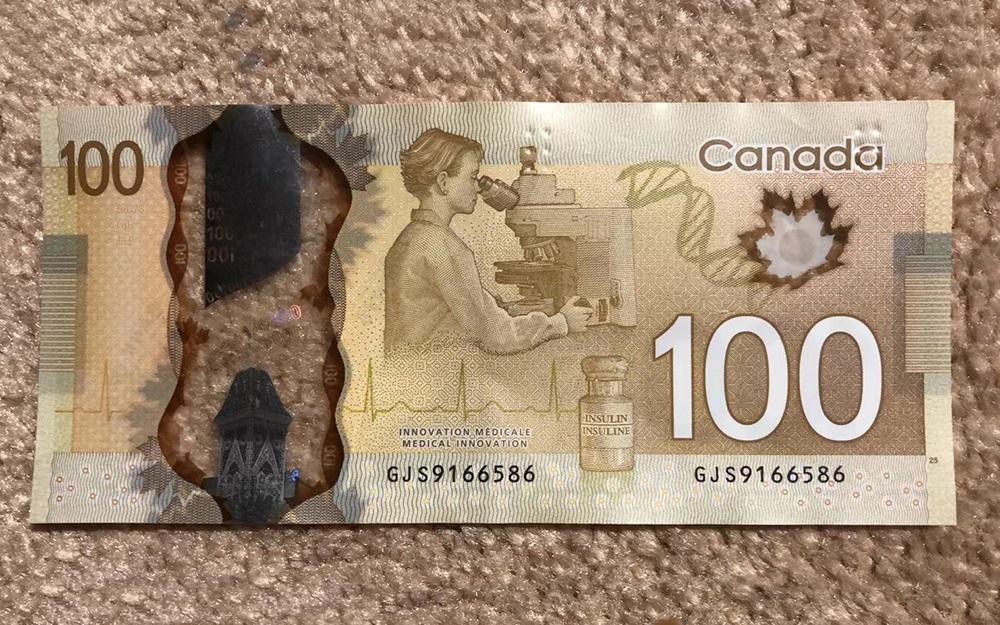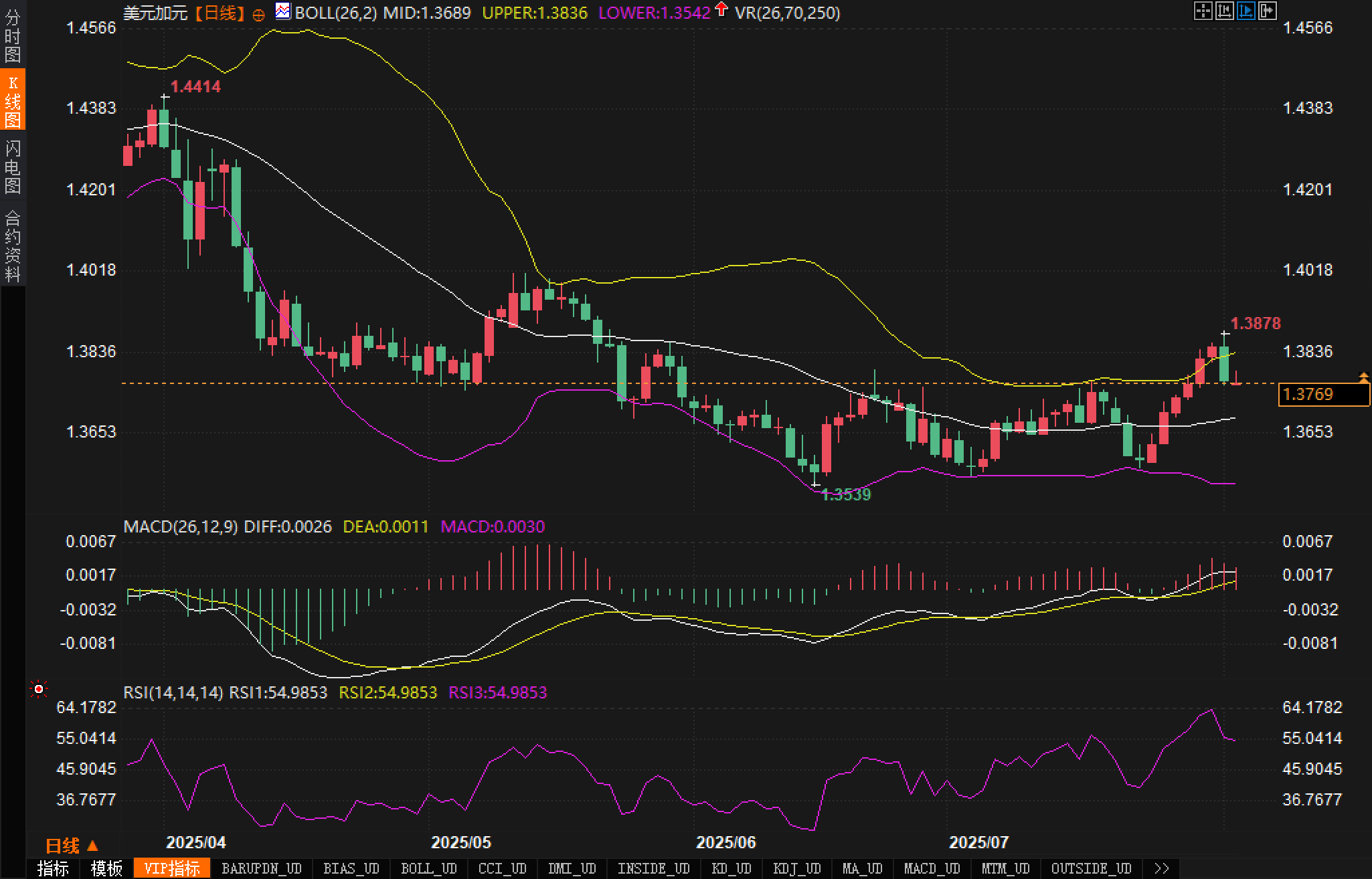The panic pullback of the US dollar is not over yet. Can the Canadian dollar bulls take over?
2025-08-04 20:59:25

Meanwhile, US President Trump's abrupt dismissal of the head of the Bureau of Labor Statistics, accusing him of "data manipulation," further undermined market confidence in US economic data and intensified selling pressure on the US dollar. Meanwhile, despite the Bank of Canada's decision to remain on hold last week, negative GDP data released the following day, depressed crude oil prices, and tariff pressure cast a shadow over the outlook for the Canadian dollar. Against this backdrop, the market is focused on the sustainability of the Canadian dollar's bullish momentum after breaking through short-term technical resistance.
Fundamentals
The cooling signals in the US labor market are particularly crucial. July saw only 73,000 new nonfarm payrolls, not only falling far short of expectations but also, more importantly, with the figures for the first two months revised downward by a combined 260,000, re-emerging from the sluggish job growth seen during the pandemic. Furthermore, an unexpected rise in the unemployment rate and a decline in the labor force participation rate have heightened market concerns about an economic slowdown. This has led to a rapid repricing of the Federal Reserve's monetary policy outlook. The probability of a September rate cut has risen to 80%, significantly higher than the less than 50% seen a week ago.
However, political factors have also contributed to rising risk aversion in the market. The Trump administration's direct intervention in the BLS has cast doubt on the credibility of the statistical data, increasing the credit risk of the US dollar. Furthermore, the early resignation of Federal Reserve Governor Kugler has given the president further influence over the composition of the FOMC, raising market concerns about the future independence of monetary policy. Given that the current weighted average US tariff rate has reached 18.3%, the highest in nearly 90 years, and inflation has yet to be fully suppressed, policy space is under pressure from multiple factors.
In contrast, while the Canadian economy isn't robust, it enjoys a relative advantage in the short term due to the lack of significant imbalances. Although negative GDP data for June has cast doubt on Canada's economic growth, the Bank of Canada has emphasized the economy's overall resilience. However, weak oil prices and increasing pressure on US exports are limiting the Canadian dollar's medium-term upside. Canada's Ivey PMI and employment data, due to be released this week, will be key indicators of the sustainability of the bullish outlook.
Technical aspects:
The daily chart shows that the USD/CAD exchange rate has been trending upward since rebounding from a low of 1.3539. The Bollinger Bands are slightly open, with the middle band moving up to around 1.3689. The current price is trading near the upper Bollinger Band at 1.3836, suggesting continued upward momentum in the short term, but also facing technical resistance. A break above 1.3880 could lead to a test of the 1.4000 mark. Failure to stabilize could lead to a retest of support at 1.3769, the top of the recent range and a valuable indicator.

The MACD indicator is trading above zero, with the red bar continuing to expand but momentum slightly converging, suggesting bullish momentum remains but is marginally weakening. The RSI indicator is trading above 54, in a neutral to strong range, with no clear overbought signals, supporting the possibility of a sustained short-term rebound.
Overall, the technical structure tends to be bullish, but in the short term, we need to be vigilant against indicator divergences and retracement needs. The key support levels are at 1.3769 and 1.3689, and the resistance levels are 1.3880 and 1.4000 respectively.
Market sentiment observation:
Market sentiment is clearly leaning towards a bearish outlook on the US dollar. The US dollar index has lost its previous support, both from a fundamental and policy perspective. The re-pricing of the September rate cut, questions about the Federal Reserve's independence, and challenges to the credibility of its statistical data have all contributed to a strengthening of bearish sentiment.
Regarding the Canadian dollar, the market has not yet reached a clear consensus, exhibiting some divergence. On the one hand, the exchange rate's rebound is supported by policy tone and technical structure, creating a certain bullish consensus. On the other hand, falling oil prices and weak Canadian economic data are dampening the momentum of bullish sentiment. Therefore, the current exchange rate rally is more driven by the inherent weakness of the US dollar than by stronger Canadian dollar fundamentals. If the US dollar index stops falling, the Canadian dollar's rebound may be difficult to sustain.
Furthermore, the market is taking a wait-and-see approach to the upcoming Canadian employment and PMI data. Any downward deviation from expectations could trigger a bullish exit. Regarding risk appetite, while equity markets have rebounded slightly, volatility has not significantly subsided, indicating that risk aversion has not fully dissipated and hindering the continued appreciation of high-beta currencies such as the Canadian dollar.
- Risk Warning and Disclaimer
- The market involves risk, and trading may not be suitable for all investors. This article is for reference only and does not constitute personal investment advice, nor does it take into account certain users’ specific investment objectives, financial situation, or other needs. Any investment decisions made based on this information are at your own risk.





















